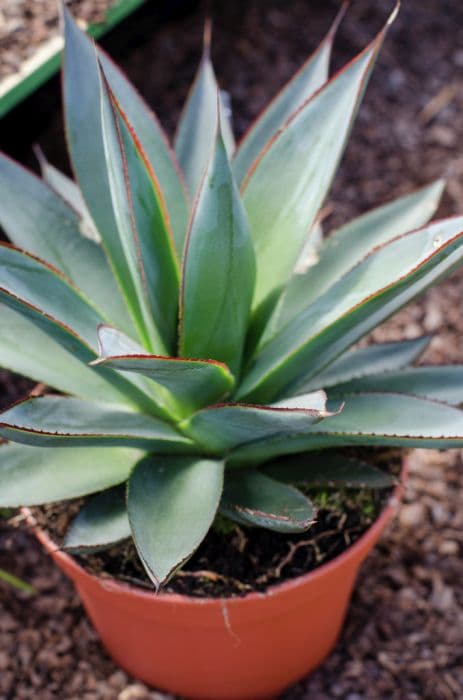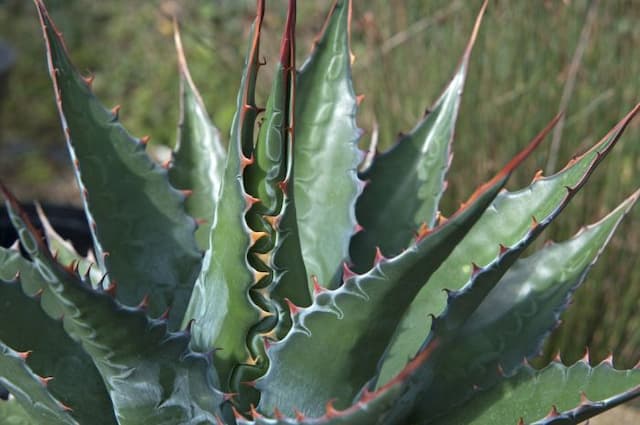Green Galtonia Galtonia viridiflora

ABOUT
Galtonia viridiflora, commonly known as the green-flowered galtonia, is a perennial plant featuring a striking appearance characterized by its elegant, bell-shaped flowers. The blooms exhibit a unique, greenish hue, which is quite uncommon among flowering plants. This notable color gives the plant its specific common name, alluding to the fresh, verdant shade of the flowers. The attractive blossoms are arranged gracefully along a spike, which ascends from the lush foliage below. The leaves of the green-flowered galtonia are typically long and strap-like, emanating from the plant's base in a dense, basal rosette formation. Their deep green color provides a lovely contrast to the lighter tone of the flowers above, augmenting the plant's overall appeal. Green-flowered galtonia is cherished by gardeners not only for its unusual floral hue but also for its ability to imbue gardens with a sense of verticality and elegance without overwhelming with its size. Furthermore, the plant's flowering season brings an added layer of interest to garden spaces, often becoming a focal point due to its distinctive coloration and floral shape.
About this plant
 Names
NamesFamily
Asparagaceae
Synonyms
Green-flowered Galtonia, Summer Hyacinth, Cape Hyacinth
Common names
Ornithogalum viridiflorum, Galtonia candicans var. viridiflora.
 Toxicity
ToxicityTo humans
Galtonia viridiflora, commonly known as summer hyacinth, does not have a widespread reputation for being toxic to humans. However, as with many plants, it may cause a varying degree of digestive distress if ingested due to the presence of saponins and other compounds that can irritate the stomach and intestines. Symptoms could include nausea, vomiting, and diarrhea. In any case of suspected plant poisoning, medical advice should be sought.
To pets
Summer hyacinth (Galtonia viridiflora) is not typically listed as a highly toxic plant to pets. While it is generally advisable to prevent pets from ingesting plants, the ingestion of summer hyacinth might lead to mild gastrointestinal upset, as with many ornamental plants. Symptoms could include vomiting, diarrhea, or drooling. If a pet ingests any part of the plant and shows adverse reactions, it is recommended to consult a veterinarian.
 Characteristics
CharacteristicsLife cycle
Perennials
Foliage type
Deciduous
Color of leaves
Green
Flower color
Greenish-white
Height
3-4 feet (0.91-1.22 meters)
Spread
1-2 feet (0.30-0.61 meters)
Plant type
Bulb
Hardiness zones
7
Native area
South Africa
Benefits
 General Benefits
General Benefits- Aesthetic Appeal: Galtonia viridiflora, commonly known as Summer Hyacinth, adds visual interest to gardens with its tall spires of bell-shaped flowers.
- Attracts Pollinators: The plant's flowers produce nectar that attracts bees, butterflies, and other beneficial insects, supporting local ecosystems.
- Easy to Grow: Summer Hyacinth is known for being low-maintenance and easy to cultivate, requiring minimal care once established.
- Drought Tolerance: Once established, the plant has moderate drought tolerance, making it suitable for xeriscaping or areas with water restrictions.
- Long Blooming Period: The flowering period of Summer Hyacinth extends through summer, providing a long-lasting display of blooms.
- Cut Flowers: The blooms of Galtonia viridiflora can be used as cut flowers for indoor arrangements, lasting well in a vase.
- Naturalizing: The plant can spread and naturalize in suitable climates, filling out garden spaces and creating a full, lush appearance over time.
- Versatility in Landscaping: Summer Hyacinth is versatile in landscaping use, fitting into borders, beds, and containers, as well as being effective when planted in masses.
- Deer Resistance: The plant is generally resistant to deer, making it an excellent choice for gardens in areas with deer populations.
 Medical Properties
Medical PropertiesThis plant is not used for medical purposes.
 Air-purifying Qualities
Air-purifying QualitiesThis plant is not specifically known for air purifying qualities.
 Other Uses
Other Uses- Galtonia viridiflora, commonly known as summer hyacinth, can be used as an informal garden boundary when planted in a row, due to its tall and upright growth habit.
- In cut flower arrangements, the distinctive blooms of summer hyacinth provide a striking vertical element and can last for an extended period when kept in water.
- As a teaching tool in horticultural classes, summer hyacinth serves as an example for bulbous plant propagation and growth habits.
- The plant's nectar-rich flowers attract pollinators like bees and butterflies, enhancing biodiversity in the garden.
- Galtonia viridiflora bulbs can be a source of starch or inulin, which may be studied for potential use in gluten-free recipes and products.
- The plant can be incorporated into sensory gardens due to its textured leaves and fragrant flowers, providing a multisensory experience.
- Galtonia viridiflora's robustness makes it suitable for erosion control on slopes, as its root system helps to hold the soil in place.
- During nighttime, the luminous white flowers of summer hyacinth can brighten up moon gardens, creating a glowing effect.
- Summer hyacinth can be used in xeriscaping, as it is relatively drought-tolerant once established and does not require frequent watering.
- As part of a themed garden, such as a "white garden" or a Victorian-style garden, Galtonia viridiflora's elegant white blooms can help achieve the desired aesthetic.
Interesting Facts
 Feng Shui
Feng ShuiThe Galtonia is not used in Feng Shui practice.
 Zodiac Sign Compitability
Zodiac Sign CompitabilityThe Galtonia is not used in astrology practice.
 Plant Symbolism
Plant Symbolism- Purity: Often white or delicate in color, the summer hyacinth is sometimes associated with purity and virtue.
- Tranquility: Its gentle appearance and green, calming hue can symbolize peace and tranquility.
- Rebirth: As a bulb plant that emerges after a period of dormancy, summer hyacinth can symbolize renewal or new beginnings.
- Fragrance: The summer hyacinth is known for its pleasant scent, which can symbolize the sweet aroma of success or pleasure.
- Consistency: Since Galtonia viridiflora blooms every year with minimal care, it can symbolize dependability and consistency.
 Water
WaterThe most common name for Galtonia viridiflora is Summer Hyacinth. This plant prefers a steady moisture level and should be watered once the top inch of soil feels dry. It's important to avoid over-watering as it may lead to root rot. In general, you can water your Summer Hyacinth with about 1 gallon of water per week during its growing season, though this may need to increase during hot, dry spells. During the dormant winter period, reduce watering significantly, only ensuring the soil doesn't completely dry out.
 Light
LightSummer Hyacinth flourishes best under full sun to partial shade conditions. It should be placed in a spot where it can receive at least 6 hours of direct sunlight each day. If planted outdoors, choose an area that is not shaded by taller plants or structures during the day.
 Temperature
TemperatureSummer Hyacinth is hardy and usually grows well in temperatures ranging between 50°F and 85°F. It can tolerate temperatures as low as 40°F, but extended periods below this can be harmful. The ideal temperature range for robust growth is between 60°F and 75°F.
 Pruning
PruningSummer Hyacinth doesn't typically require regular pruning, but deadheading spent blooms encourages further flowering. After flowering, removing flower stalks will keep the plant tidy. Pruning should be done right after the blooming phase finishes, generally in late summer or early fall.
 Cleaning
CleaningAs needed
 Soil
SoilSummer Hyacinth prefers a well-draining soil mix with good fertility and a neutral to slightly acidic pH of around 6.0 to 7.0. A combination of loamy garden soil, peat, and sand in equal parts can create an ideal environment for this bulbous plant. Ensuring adequate drainage while retaining some moisture is key to its healthy growth and blooming.
 Repotting
RepottingSummer Hyacinth bulbs should generally be repotted every 2 to 3 years to refresh the soil and provide space for bulb growth. It's best to repot after the flowering season when the leaves have died back, during the plant's dormant period.
 Humidity & Misting
Humidity & MistingSummer Hyacinth thrives best in moderate humidity levels; however, it is quite adaptable and does not require specific humidity conditions. Maintaining general indoor humidity will suffice for its growth.
 Suitable locations
Suitable locationsIndoor
Place Summer Hyacinth in bright, indirect light.
Outdoor
Plant in well-drained soil with full to partial sun.
Hardiness zone
7-10 USDA.
 Life cycle
Life cycleGaltonia viridiflora, commonly known as summer hyacinth, begins its life cycle as a bulb planted in well-drained soil in autumn or spring. Upon sprouting, it develops long, strap-like leaves that form a basal rosette. The plant enters its vegetative stage, focusing on leaf and root growth to gather energy. During the summer, the summer hyacinth undergoes its reproductive phase, producing tall spikes with bell-shaped, greenish-white flowers that attract pollinators for sexual reproduction. After pollination and flowering, the plant sets seed, which falls to the ground or is carried by the wind and animals to propagate the species. As the cold weather approaches, the foliage of the summer hyacinth dies back and the plant enters a dormancy period where the underground bulb survives until the next growing season.
 Propogation
PropogationPropogation time
Spring to Summer
Galtonia viridiflora, commonly known as summer hyacinth, is primarily propagated through bulb division. The best time to propagate summer hyacinth is in autumn, after the foliage has died back, indicating that the plant has entered dormancy. To propagate, carefully lift the clumps of bulbs and gently separate them, making sure that each divided section has at least one growth point. These sections can then be directly replanted in well-draining soil at a depth of about 5 inches (approximately 13 centimeters), spaced about 6 to 8 inches (15 to 20 centimeters) apart, to allow enough space for the new plants to grow. Water the newly planted bulbs thoroughly to establish them. This method is straightforward and helps to maintain the health of the clump by preventing overcrowding.









